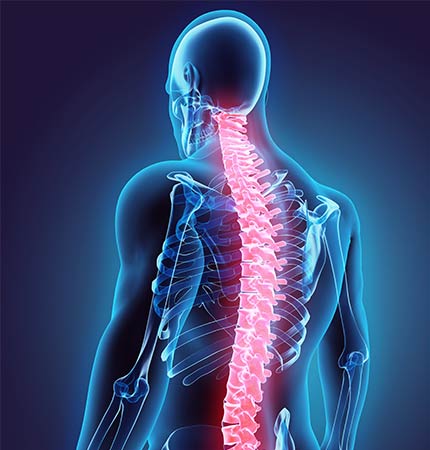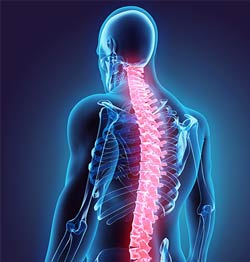Understanding the Difference Between Tramadol and Toradol
Tramadol and Toradol are both effective pain relievers, but they work in different ways and have distinct uses. Dr. Andrew Morchower, M.D., M.P.H., advises that Tramadol is an opioid-like medication typically used for moderate pain, while Toradol is a nonsteroidal anti-inflammatory drug (NSAID) used for short-term pain relief. Understanding their differences, including their mechanisms, side effects, and appropriate uses, can help you choose the right medication for your needs. For more information, contact us or book an appointment online. Our clinics are located in Frisco, TX, Sunnyvale, TX, and Mesquite, TX.


Table of Contents:
What is the difference between tramadol and Toradol?
How do tramadol and Toradol work differently?
What conditions are treated with tramadol and Toradol?
Are tramadol and Toradol both opioids?
At OmniSpine Pain Management, we understand that effective pain relief requires a tailored approach using a variety of treatment options. Two commonly used medications in our practice are tramadol and Toradol (ketorolac). While both are important tools for managing pain, they have different properties and are used in different clinical scenarios.
Tramadol is an opioid analgesic that works by binding to opioid receptors in the brain and spinal cord, reducing the perception of pain. It also has effects on neurotransmitters such as serotonin and norepinephrine, which can further help alleviate pain. At OmniSpine Pain Management, tramadol may be prescribed for patients experiencing moderate to moderately severe pain—especially when other non-opioid options are insufficient. However, because tramadol is an opioid-like medication, our pain specialists carefully evaluate each patient’s medical history and risk factors for dependence before prescribing it, and we closely monitor its use as part of a comprehensive pain management plan.
Toradol (ketorolac), on the other hand, is a nonsteroidal anti-inflammatory drug (NSAID) that works by reducing inflammation at the source of pain. Unlike tramadol, it does not act on opioid receptors and is often used for short-term management of acute pain, such as after certain procedures or injuries. Toradol may be administered as an injection during in-office procedures or prescribed for brief periods to help control inflammation and pain. Because of potential side effects, such as gastrointestinal or kidney issues, our providers use Toradol judiciously and ensure it is not used for extended durations.
At OmniSpine Pain Management, we are committed to providing our patients with the most effective and individualized treatment options for pain relief. Two commonly used medications in pain management are tramadol and Toradol, each with unique mechanisms and advantages depending on the nature of your pain.
Tramadol is an opioid analgesic, though generally considered less potent than many other opioids. It works by binding to specific receptors in the brain and spinal cord, blocking the transmission of pain signals. Additionally, tramadol inhibits the reuptake of neurotransmitters such as serotonin and norepinephrine, which can enhance pain relief and also influence mood—an important consideration for patients whose chronic pain affects their emotional well-being. Tramadol may be considered for certain types of moderate to moderately severe pain, especially when both central pain modulation and mood support are important aspects of care.
Toradol (ketorolac), on the other hand, is a nonsteroidal anti-inflammatory drug (NSAID). Unlike tramadol, Toradol does not act on opioid receptors. Instead, it reduces pain and inflammation by inhibiting the enzymes COX-1 and COX-2, which are responsible for producing prostaglandins—chemicals that contribute to pain, inflammation, and swelling.
Understanding how these medications work allows our experienced team to tailor a pain management plan that best meets your needs. Tramadol may be appropriate when pain is more centrally mediated or when an opioid is indicated, while Toradol is effective for acute pain related to inflammation or tissue injury. Each medication also comes with its own set of potential side effects and considerations, which we carefully review with each patient.
At OmniSpine Pain Management, we offer personalized, evidence-based strategies to help patients find relief from both acute and chronic pain. Two commonly used medications in our pain management protocols are tramadol and Toradol (ketorolac). While both are effective for pain relief, they differ in how they work and the types of pain they are best suited to treat.
Toradol, or ketorolac, is a nonsteroidal anti-inflammatory drug (NSAID) that we may use for short-term, acute pain relief. At OmniSpine Pain Management, Toradol is frequently administered after surgical procedures or dental surgeries or to manage pain from musculoskeletal injuries like sprains and strains. It may also be used in select cases for rapid pain relief, such as kidney stones or severe headaches. Because Toradol can impact the gastrointestinal tract and kidneys, our pain specialists limit its use to five days or less and monitor patients closely for side effects.
Whether you are experiencing sudden, severe pain or struggling with ongoing chronic discomfort, the team will develop a safe, effective treatment plan tailored to your needs. We are committed to using the most appropriate medications—like tramadol and Toradol—while prioritizing your safety and overall health. All medication regimens at our practice are supervised by experienced pain management physicians to ensure the best possible outcomes.
Tramadol is an opioid analgesic commonly used in our practice to address moderate to moderately severe pain. It works by binding to opioid receptors in the brain, helping to alter the way the body perceives pain. In addition, tramadol inhibits the reuptake of certain neurotransmitters, such as serotonin and norepinephrine, which can further enhance its pain-relieving effects. Because tramadol is an opioid, it is carefully prescribed and monitored at OmniSpine to minimize the risk of side effects and dependency.
Toradol (ketorolac), in contrast, is a nonsteroidal anti-inflammatory drug (NSAID) frequently used at OmniSpine Pain Management for short-term relief of moderate to severe pain, especially following procedures or in acute pain situations. Toradol does not interact with opioid receptors. Instead, it works by reducing the production of prostaglandins—chemicals in the body responsible for inflammation and pain. As an NSAID, Toradol is not an opioid and carries different potential risks and side effects, such as gastrointestinal discomfort or effects on kidney function.
Why is this distinction important for our patients? At OmniSpine Pain Management, we individualize every treatment plan. Understanding whether a medication is an opioid or an NSAID helps us balance the benefits and risks, optimize pain relief, and minimize side effects or long-term complications. Our multidisciplinary team considers your overall health, pain level, and medical history to decide the most appropriate therapy, whether that’s tramadol, Toradol, or another effective option.
If you have questions about your pain management regimen or the medications recommended for you, our specialists at OmniSpine Pain Management are here to help. Your comfort, safety, and long-term well-being are always our top priorities. For more information, contact us or book an appointment online. Our clinics are located in Frisco, TX, Sunnyvale, TX, and Mesquite, TX. We serve patients from Dallas TX, Frisco TX, Mesquite TX, Sunnyvale TX, Plano TX, Garland TX, Forney TX, Cedar Hill TX, Denton TX, Balch Springs TX, and surrounding areas.
Check Out Our 5 Star Reviews






